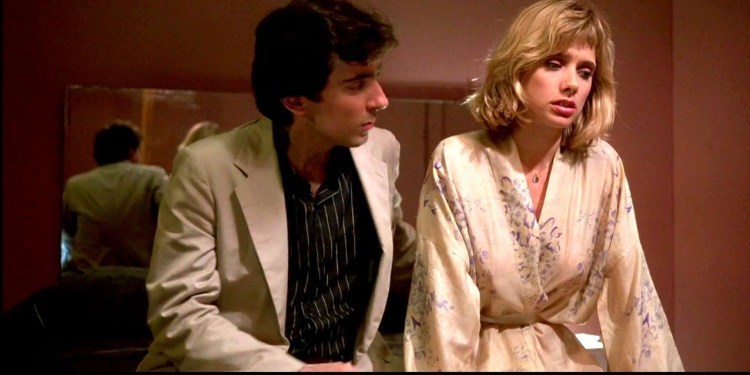While watching the 2019 MIFF presentation of Martin Scorsese’s 1985 fabulously ridiculous “After Hours,” with the incredibly young and exceptionally talented Griffin Dunne as Paul Hackett, a 1980s pre-Silicon word processor in Manhattan, I’m thinking, “Hey, I know this guy.”
Yes. I do, and so does Martin, or at least he did back in 1985 when he made this film. It’s Homer’s Odysseus. No, it’s not. It’s Jimmy Joyce’s variation on a theme-with-character Leopold Bloom.
There are polished performers here — some aged, some deceased.
In this “After Hours,” young Griffin leaves work ready to spend a dull evening in a SoHo (South of Houston Street for you Mainers) coffee house, reading Henry Miller’s “Tropic of Cancer,” when who does he meet but the very young and quirky lipped Rosanna Arquette, who enchants him with a story about her ex-husband, a “Wizard of Oz” nut who can only reach orgasm by screaming “Surrender, Dorothy, surrender.”
This is only the beginning of Leopold’s, I mean Griffin’s, long journey home and only the first freaky character he will meet.
Rosanna (I’m going to use the actors’ names here so as not to get lost) takes him to the apartment she shares with a paper mache sculpture artist (Linda Fiorentino) who teaches him her messy art form, in various forms of undress.
When the artist falls asleep, Griffin makes his way across the street to a bar where he encounters a waitress (Teri Garr) who writes “Help me” on Griffin’s coffee check and quietly invites him home.
“I live just across the street,” she chirps. “ You want a TV dinner?” Once there, she presents him with a sexual offer and a plaster of Paris bagel.
We will meet, in a dark alley, two inept burglars, the great once upon a time comedy team of Cheech and Chong, who come and go too quickly.
Yet another quirky blonde appears, the great Catherine O’Hara, as the driver of a Mister Softee ice cream truck, who takes our hero home and regales him with her problem of not having a city truck driver license.
O’Hara will soon, like almost everyone Dunne comes into contact with, betray him. She thinks he’s one of the burglars who have been hitting the neighborhood, and she goes around plastering his likeness on telephone posts and organizes a neighborhood vigilante posse to catch him.
Dunne, who lost his only $20 bill in a wild cab ride, has only 98 cents in his pocket.
When he discovers the subway fare had been raised at midnight to $1.50, he begins the long walk home in a driving rain, through cameraman Michael Ballhaus’s beautifully photographed, haunting and evocative lower Manhattan streets, hunted by cops, vigilantes and an assortment of blondes and a lonely artist (the wonderful Verna Bloom) who tries to hide him from his pursuers by papering him into a paper mache statue.
Our wanderer will eventually make it back to his office, just as the sun comes up, as Griffin plops, covered with paste and paper at his desk.
“After Hours” is not the Scorsese of “Raging Bull.” It is a surprise offering, a comedy dessert full of nuts and tart sauce written by Joseph Minion, 26, who, we’re told, created it while at Columbia University’s Graduate Film Division.
It is, you’ll notice, skillfully done by a master and beautifully put together by the iconic editing genius, Thelma Schoonmaker, Scorsese’s scene crafter since “Raging Bull.” Dark it is; hilarious it certainly is. It’s just the right thing to savor in our dark political universe.
J.P. Devine, of Waterville, is a former stage and screen actor.
Send questions/comments to the editors.



Comments are no longer available on this story